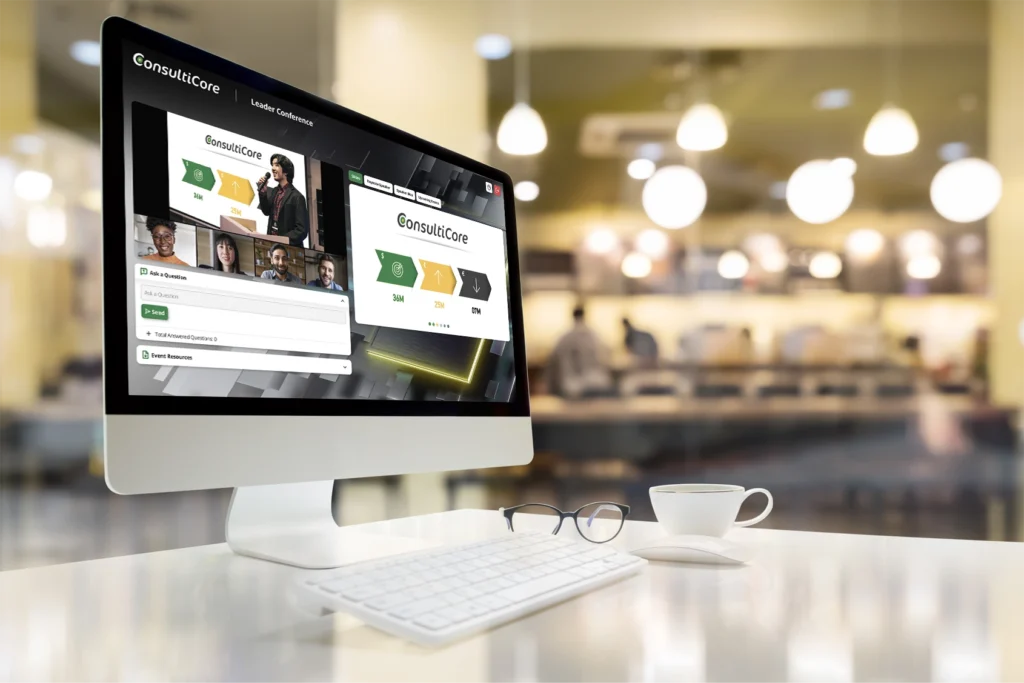
How to Make Virtual Events More Engaging: Tools, Tips & Best Practice
- by GlobalMeet Blog Team
- ,
In an era where remote work and virtual events have become the norm, one question remains at the forefront of every host’s mind: how to make virtual events more interactive and engaging. Whether you’re running a team check-in, a client workshop, or a virtual event with hundreds of participants, event engagement can make or break the success of your session.
Bland, one-way communication isn’t just ineffective — it leads to distracted attendees, reduced productivity, and missed opportunities for collaboration. But with the right strategies and technology, you can turn routine online events into dynamic experiences that keep participants focused, involved, and even excited.
Common Virtual Event Engagement Challenges
There are a number of reasons why virtual events often fall flat. Understanding these reasons is half of the journey towards better, more engaging virtual events.
Passive Participation
Too many virtual events rely on a single speaker and a sea of muted microphones. This passive format discourages interaction and makes it easy for attendees to zone out. The solution is simple. Break up the monotony. Incorporate regular participation opportunities such as polls, Q&As, or short discussion prompts.
Screen Fatigue
Long sessions filled with back-to-back slides drain attention spans. The average participant starts checking emails within 10 minutes if there’s no interaction. So, the best approach is to keep events concise and varied, and use a mix of content formats — videos, whiteboards, breakout discussions — to hold attention.
Technical Barriers
Unfamiliar platforms or lack of accessibility features (like captions or mobile-friendly interfaces) can exclude or frustrate attendees. Choose tools that are intuitive, built with accessibility in mind, and are easy to access from any device.
Lack of Structure
Virtual events without a plan can feel chaotic or directionless, especially for larger groups. Always share an agenda in advance and stick to a structured flow that includes time for interaction.
Why Interactive Elements Matter in Virtual Events
Virtual doesn’t have to mean disconnected. When events are designed with interactivity and engagement in mind, you unlock several benefits:
- Increased focus: Interactive features reduce multitasking and increase information retention.
- Better collaboration: Real-time feedback and discussion foster deeper engagement.
- Higher satisfaction: Attendees leave feeling heard and involved, not talked at.
- Actionable insights: Tools like polls and live chat give you valuable input from attendees.
In short, adding interactive components helps recreate the collaborative energy of in-person meetings in a digital space.
Tools and Techniques to Boost Virtual Event Engagement
Creating truly engaging virtual events is about more than just the content that you’re sharing. It requires a partnership of thoughtful facilitation, and the right tools.
Breakout Discussions
Breakout rooms allow for small group discussions, brainstorming sessions, or focused tasks. They’re ideal for smaller team retrospectives, icebreakers and networking, and problem-solving discussions. With clear instructions and a facilitator assigned to each room they can make a real impact.
Live Reactions
Simple but powerful — reactions like thumbs-up, applause, or emojis give participants a way to respond instantly without interrupting the flow. This helps presenters read the virtual room and adapt their style on the fly.
Polls and Quizzes
Live polls engage attendees by asking for opinions or checking knowledge. These are perfect for keeping the energy high and gauging audience sentiment. Use polls to kick off a discussion or wrap up a section with a quick knowledge check to ensure that your participants are paying attention.
Gamification
Adding game-like elements — points, leaderboards, scavenger hunts, or virtual badges — makes learning and participation a little more fun. You can use gamification during training or team-building sessions to boost involvement.
Virtual Whiteboards
Collaborative Whiteboards are an often underused tool, but they can be a gamechanger in smaller scale virtual meetings where real-time collaboration is king. Map out tasks, visually brainstorm and co-create in real time, and co-design workflows seamlessly with screen sharing to talk through the more complex elements.
Best Practices for Structuring an Engaging Virtual Event
Even with the best tools, event engagement will lag without thoughtful planning. Here’s how to structure events that foster participation from the start.
Set Clear Objectives: Start with the outcome in mind. What should participants walk away with? Tailor your interactive elements to support those goals.
Design for Participation: Make interactivity a requirement, not a bonus. Plan intentional moments for audience involvement every 5–10 minutes.
Use an Experienced Moderator: Whether it’s a facilitator or co-host, someone should guide the discussion, manage chat questions, and ensure all voices are heard.
Mix Presentation Styles: Break your meeting into segments — slides, videos, breakout groups, polls — to maintain energy and avoid fatigue.
Close with Engagement: Wrap up with a final poll, word cloud, or round of reflections to give everyone a voice and reinforce takeaways.
Elevate Virtual Meeting Engagement with GlobalMeet
Interactive Engagement Features
From live polling and Q&A to real-time reactions and content sharing, GlobalMeet makes it easy to involve participants throughout your event.
Live Transcription and Summaries
Never miss a beat with live captions, automated meeting transcripts and key point summaries — great for keeping everyone aligned.
Enterprise-Grade Security
When it comes to virtual event engagement, InfoSec compliance matters. GlobalMeet meets rigorous enterprise security standards, giving IT peace of mind.
Whether you’re hosting a high-stakes webinar or a recurring team sync, GlobalMeet helps ensure your virtual events are more than just video calls.
Conclusion
Virtual and hybrid events are here to stay, but they don’t have to stay boring. With the right structure, tools, software, and intention, you can build interactive webcasts and events that boost engagement, spark innovation, and deliver better outcomes every single time.


